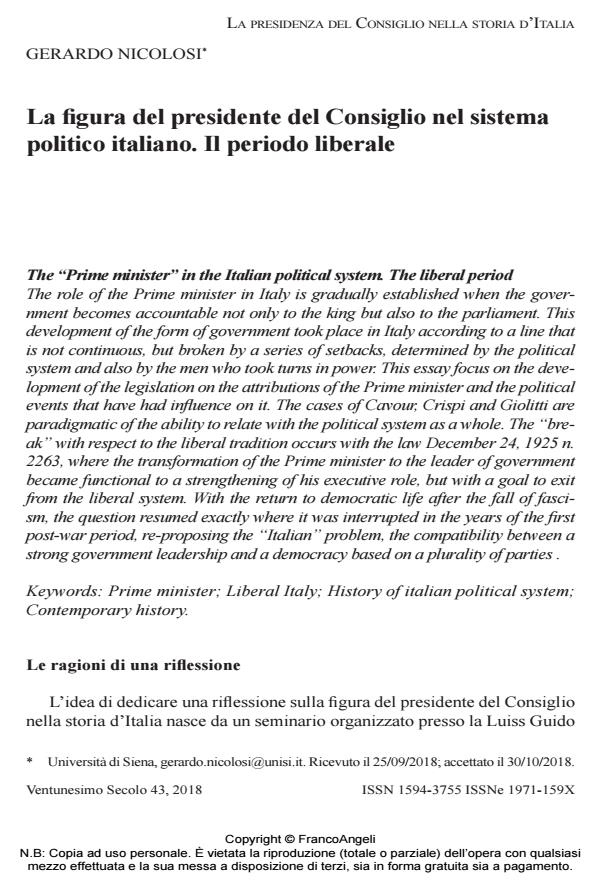The "Prime minister" in the Italian political system. The liberal period
Journal title VENTUNESIMO SECOLO
Author/s Gerardo Nicolosi
Publishing Year 2019 Issue 2018/43
Language Italian Pages 20 P. 11-30 File size 73 KB
DOI 10.3280/XXI2018-043002
DOI is like a bar code for intellectual property: to have more infomation
click here
Below, you can see the article first page
If you want to buy this article in PDF format, you can do it, following the instructions to buy download credits

FrancoAngeli is member of Publishers International Linking Association, Inc (PILA), a not-for-profit association which run the CrossRef service enabling links to and from online scholarly content.
The role of the Prime minister in Italy is gradually established when the government becomes accountable not only to the king but also to the parliament. This development of the form of government took place in Italy according to a line that is not continuous, but broken by a series of setbacks, determined by the political system and also by the men who took turns in power. This essay focus on the development of the legislation on the attributions of the Prime minister and the political events that have had infl uence on it. The cases of Cavour, Crispi and Giolitti are paradigmatic of the ability to relate with the political system as a whole. The "break" with respect to the liberal tradition occurs with the law December 24, 1925 n. 2263, where the transformation of the Prime minister to the leader of government became functional to a strengthening of his executive role, but with a goal to exit from the liberal system. With the return to democratic life after the fall of fascism, the question resumed exactly where it was interrupted in the years of the fi rst post-war period, re-proposing the "Italian" problem, the compatibility between a strong government leadership and a democracy based on a plurality of parties .
Keywords: Prime minister; Liberal Italy; History of italian political system; Contemporary history.
Gerardo Nicolosi, La figura del presidente del Consiglio nel sistema politico italiano. Il periodo liberale in "VENTUNESIMO SECOLO" 43/2018, pp 11-30, DOI: 10.3280/XXI2018-043002